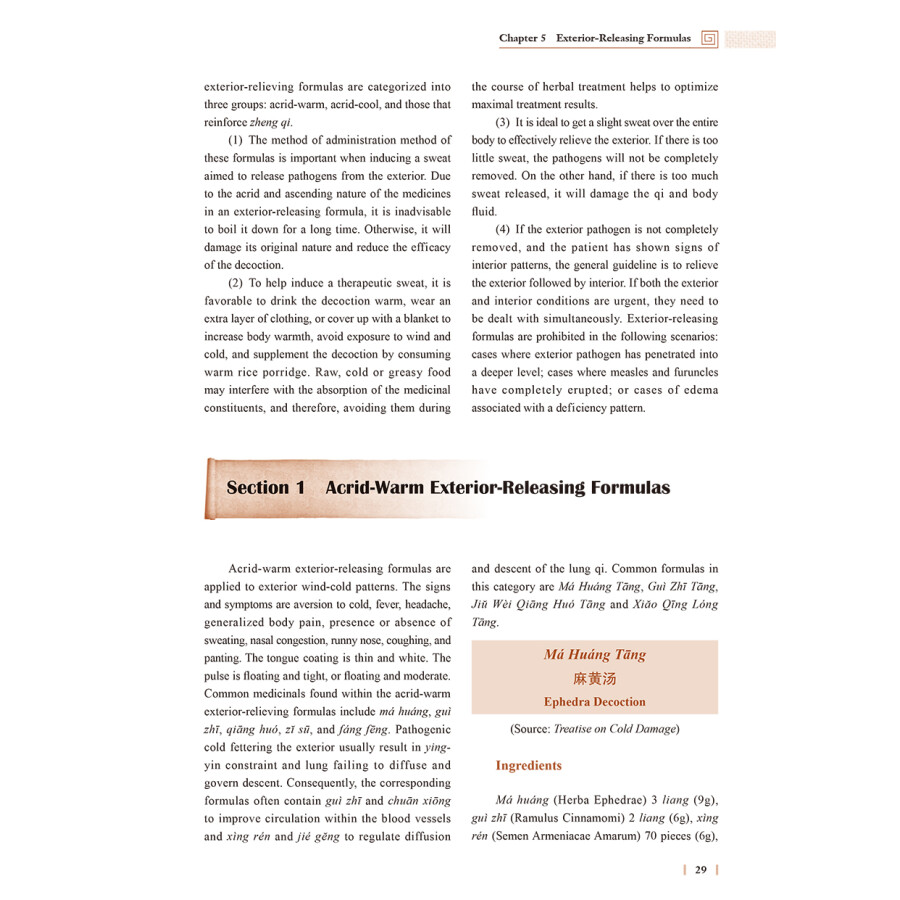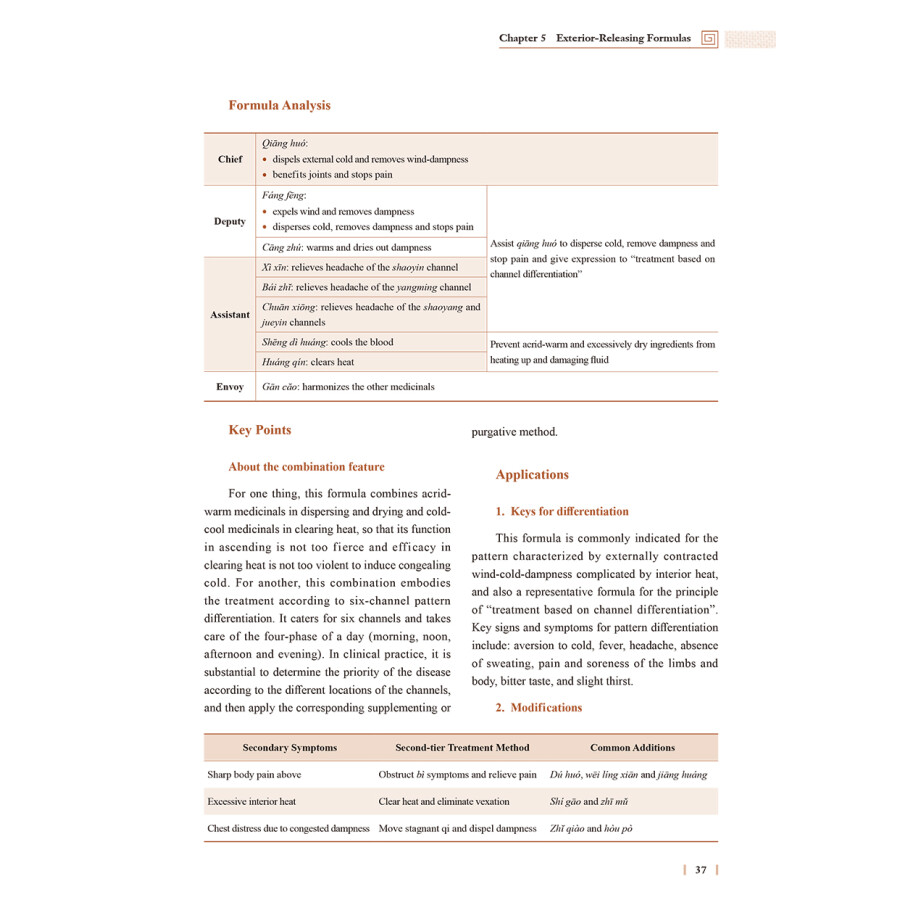Details
The science of Chinese medicinal formulas is a discipline that studies and expounds the basic principles and clinical application of treatment and medicinal formulation of Chinese medicine, and is an important element of the theoretical system of Chinese medicine. The compilation of this textbook is based on the requirements for its English version for Chinese medicine majors in national colleges and universities, as well as on the National Health Commission’s 13th Five-Year Plan. This textbook is aimed at international students who are accustomed to organized and clear reading, and who are proficient in thinking logically and independently.
The book is divided into two parts: Part One and Part Two. Part One focuses on the basic knowledgeof formulation and treatment methods, formula composition, compatibility rules, forms of the formula,and decoction and administration methods. Part Two describes treatment methods and effects of different formulas, introducing a total of 19 categories — exterior-releasing, downward-draining, harmonizing, heat -clearing, summer-heat-clearing, interior-warming, supplementing and boosting, astringent, mind-calming, orifice-opening, qi-rectifying, blood-regulating, wind-expelling, dryness-relieving, dampness-dispelling,phlegm-dispelling, digestion-promoting, worm-expelling, and emetic. The content under each formally introduced medicinal formula includes its name, source, ingredients, administration methods, actions,indications, disease mechanism, formula analysis, applications, associated formulas, case studies, etc. This book collects 328 basic, representative, and commonly used clinical formulas, including 173 formally introduced and 155 associated formulas. An index of formula names is located at the end of the book.
This textbook is student-centric, with tables and images employed throughout the book, excessive quotations from classical works are avoided, and its language is concise. Specific content is arranged as such to improve students’ learning, induction, and logical analysis abilities, leaving room to promote their critical thinking skills. There are five main features of this book. First, the ingredient proportions of a given medicinal formula used by physicians of a given era are unified, paying attention to the ratio of combinations. Second, the medicinal ingredients used in a formula are ordered according to the composition rules of “chief, deputy, assistant, and envoy”. Third, the disease pattern based treatment mechanism and elaboration of the formula are presented in a highly condensed tabular form. Fourth, the addition and subtraction methods are also presented in table format, without lengthy description of the disease mechanism, to leave room for teachers to explain and students to think independently. Fifth, the originalChinese text and the section of questions and answers of each chapter are provided online as supplementarymaterial to thus save space in the paper textbook.
This book was completed by members of the Compiling and Translating Committee, and the Chinese and English manuscripts were reviewed by the editors-in-chief. The original Chinese version was assigned to several committee members—Xu Erping took Part One, General Discussion, Yuan Lixia wrote the chapters of exterior-releasing and worm-expelling formulas, Du Guangli completed chapters of downward draining and dryness-relieving formulas, Ma Shaodan wrote the chapters illustrating harmonizing and wind-expelling formulas, Fan Ying completed the chapter of heat-clearing formulas, Xu Xiaoyu compiled the chapters of summer-heat-dispelling and interior-warming formulas, Long Xuyang wrote the chapter ofsupplementing and boosting formulas, Zhao Xueying completed chapters of astringent as well as digestion promoting formulas, Chen Jianping compiled the chapters of mind-calming and phlegm-dispelling formulas, Yang Yong elaborated the chapters of orifice-opening and qi-rectifying formulas, Liu Hongyan compiled the chapters of blood-regulating and emetic formulas, and last but not least, Han Tao expounded the chapter of dampness-dispelling formulas. Ye Qiaobo, Azure Yingzhe Duan, Cheng Xia, Wang Jing, Li Yibei, Ye Qing, Ma Xitao, and Shi Guoqi were responsible for the English translation.
Compiling and editing the English version of a Chinese medicine textbook was an arduous task.Although we have expended tremendous efforts during the process, errors are inevitable due to humanlimitations. We hope that readers provide their valuable suggestions, so that we can continuously revise,improve on, and enhance this work in the future.
Compiling and Translating Committee of Chinese Medicinal Formulas
December 2020









